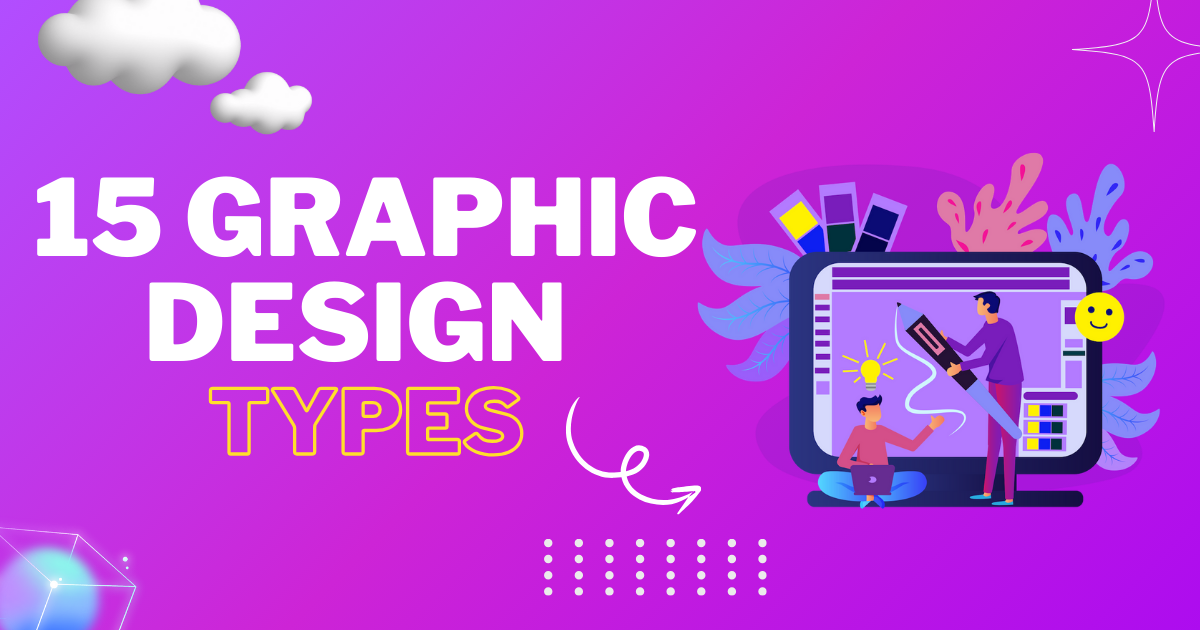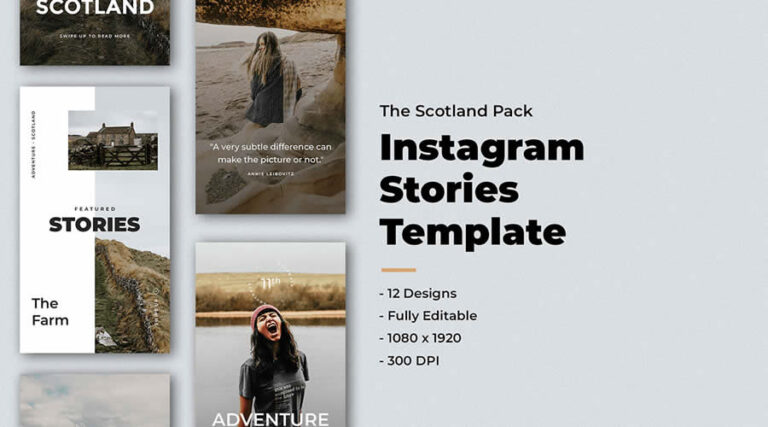
In the vast and evolving world of design, understanding the different graphic design types is crucial for both budding and seasoned professionals. Graphic design extends far beyond simple visuals; it is a communication tool that encompasses various styles and techniques used across multiple platforms and industries. From user interface design to typography and infographics, each type serves a unique purpose and follows specific principles, making the study of graphic design types fundamental for creators aiming to deliver compelling visual messages.
This article will explore key categories of graphic design, offering insights into each area’s distinctive features and applications. Among the topics discussed are brand design, which lays the foundation for a company’s visual identity, and environmental design, which merges physical space with visual cues to guide user interaction. Additionally, specialized areas such as web and digital design, UI/UX design, and motion graphics design highlight the industry’s dynamic nature. Other crucial aspects like typography, powerpoint design, and publication design reveal the depth and breadth of graphic design. By providing a comprehensive overview of the main graphic design types, this guide aims to equip readers with a clearer understanding of the field’s diversity and the versatile skills required to navigate it successfully.
-
Brand design (visual identity design / corporate design)
Definition and Scope
Brand design, often referred to as visual identity design or corporate design, encompasses the visual elements that represent a company. This includes a company’s logo, fonts, icons, color palette, visual style, and other important visuals. It’s crucial to distinguish between corporate design and corporate identity; the latter also involves corporate behavior, communication, and culture alongside design elements. The primary aim of a well-defined corporate design is to achieve a visually consistent appearance that not only conveys the unique features of the company but also sets it apart from competitors. A consistent application of the company’s characteristic elements enhances recognition, thereby boosting brand awareness.
Key Elements
Several elements are fundamental to the design system of a brand, ensuring its visual identity is both cohesive and recognizable:
- Logo: Acts as the primary image or symbol for brand identification, even when the brand name is not visible.
- Typography: The fonts used by a company can reflect the brand’s character, whether it be conservative, factual, or otherwise. Typography is a critical element in conveying the brand’s essence.
- Color Scheme: Colors carry both cultural and emotional meanings. The composition of a brand’s color palette is central to its corporate design, influencing how the brand is perceived.
- Imagery Style: The choice of images, their mood, light, color climate, contrast, and composition play a significant role in communicating emotions and messages directly.
- Icons: A concise icon system aids in content communication and can significantly contribute to a brand’s identity. The style of the icons can make a brand recognizable.
- Design Grid: Utilized for arranging and systematizing content, the design grid supports eye movement and content capture, adhering to design laws and principles.
Achieving a strong brand design involves more than just creating a logo or selecting a color palette; it requires a comprehensive approach that includes research, strategy, and the thoughtful integration of various design elements to reflect the brand’s positioning and personality effectively.
2. Environmental graphic design
Environmental graphic design (EGD) merges multiple disciplines including graphic design, architecture, and art to significantly enhance the user experience within a space. This form of design strategically uses graphic elements like typography, color, imagery, and textures to craft and elevate people’s interactions within physical environments.
Definition and Scope
EGD is recognized for its ability to curate experiences through the visual translation of ideas in built environments. It’s a multidisciplinary field that employs a broad array of applications and techniques, ranging from signage and super graphics to art installations and strategic color use. The scope of EGD is vast, making it an exciting yet complex discipline that often defies neat definitions. Its implementations provide a layered experience where identity, imagery, and a sense of place are enhanced through emotional triggers and spatial concepts.
Key Elements
- Color: Utilized to alter the mood of a space, color can make an environment feel energetic, somber, or playful. It aids in categorizing, contextualizing, and differentiating spaces or parts of a space.
- Typography: This element communicates essential information through text for wayfinding, labeling, identifying, marketing, and selling purposes.
- Imagery: Beyond text, imagery conveys information and evokes emotions, making it a pivotal component of EGD.
- Texture: Adding a tangible dimension to spaces, texture can evoke emotions and make the connection to the environment more profound. For instance, incorporating elements like tree bark can simulate the experience of being in nature.
- Wayfinding and Signage: These systems guide individuals through a space, helping them navigate areas such as airports and streets by providing clear directions and information.
- Wall and Floor Graphics: Treated as extensions of a company, wall and floor graphics play a crucial role in influencing user experience and showcasing brand messages.
- Digital Displays: LED or video walls that project various types of content, including live metrics and social media feeds, serve both decorative and informational purposes.
- Branded Environments: The primary spaces where employees and customers interact, branded environments breathe life into a brand through visual and architectural storytelling.
- Interactive Media: Engaging users through modern technology, interactive media like virtual reality and animations become integral parts of the business reality.
Environmental graphic design is not just about aesthetics; it’s a strategic tool that enhances the way people connect and relate to spaces, evoking emotions of safety and trust. Whether it’s in corporate buildings, hospitals, schools, or retail spaces, EGD plays a significant role in creating memorable brand stories and improving navigational experiences.
3. Publication graphic design
Definition and Scope
Publication graphic design focuses on traditional materials such as books, magazines, and catalogs. Designers in this field select layouts, typography, and images to create visually appealing and informative publications. This area of graphic design is essential for communicating ideas effectively through printed media, encompassing a variety of elements from typography to illustration.
Key Elements
- Typography & Type Design: Crucial for making text readable and engaging, typography in publication design also helps establish the tone and style of the publication.
- Layouts: Effective layouts organize content in a way that guides the reader’s eye and enhances readability. This includes the strategic placement of text and images.
- Imagery: Including photos, illustrations, and graphics, imagery complements the textual content, adding visual interest and aiding in storytelling.
- Print Design: Involves choosing paper types, ink, and printing techniques that affect the final look and feel of the publication.
- Packaging: While primarily associated with product design, packaging principles can also apply to how publications are presented and protected.
- Corporate Identity & Branding: Publications often serve as a component of broader branding efforts, requiring consistency with corporate identity in design elements.
This section of graphic design plays a pivotal role in the media and publishing industries, where the visual presentation of information must not only capture attention but also facilitate the clear and effective communication of messages.
4. Packaging design
Definition and Scope
Packaging design is the art of enclosing or protecting products for distribution, storage, sale, and use. It involves creating the packaging’s visual and physical forms to enhance the product’s marketability and user experience. This process includes selecting appropriate materials, shapes, and designs that reflect the brand’s identity and meet consumer needs. Effective packaging design not only ensures that products are secure during transit but also plays a critical role in attracting consumers and communicating the brand’s message.
Key Elements
- Materials: Choosing the right materials is crucial for both the protection of the product and the brand’s environmental stance. Sustainable materials often resonate well with consumers, particularly those who are environmentally conscious.
- Typography: The style, arrangement, and typeface used on packaging play a significant role in brand recognition and consumer appeal. It should be easy to read and match the brand’s character.
- Colors: Colors can influence buyer behavior and brand perception. The choice of color should align with the brand’s identity and appeal to its target audience.
- Shape: The shape of the packaging should not only be practical for storage and transport but also appealing to consumers, enhancing the overall aesthetic and functionality.
- Brand Messaging: Effective packaging clearly communicates the brand’s values and benefits through design elements like logos, taglines, and other graphic content. This helps in differentiating the product from competitors and building a strong brand connection with the consumers.
- Design Consistency: Maintaining a consistent design across all packaging elements ensures a cohesive brand identity and enhances brand recognition among consumers.
By integrating these elements thoughtfully, packaging design can significantly impact a product’s success in the market, making it an indispensable tool in the marketing mix.
5. Web design (digital design)
Definition and Scope
Web design, often referred to as digital design, is a multifaceted field that involves creating and optimizing digital interfaces to enhance user interaction on electronic devices like computers, tablets, and mobile phones. This discipline encompasses various aspects, from aesthetic design to functional layout, focusing on making digital experiences accessible and engaging for all users. Key areas include web graphic design, interface design, user experience design, and search engine optimization.
Key Elements
- HTML (HyperText Markup Language): Serves as the backbone of web pages, defining the structure and content, which includes text, images, and links. A thorough understanding of HTML is crucial for web designers to effectively structure websites and collaborate with developers.
- CSS (Cascading Style Sheets): Manages the visual presentation of web pages. It allows designers to establish layout, fonts, colors, and other stylistic elements, making the websites visually appealing and functionally smooth.
- JavaScript: Enhances web pages by adding interactivity and dynamic elements such as animations and responsive features, adapting content to various screen sizes and improving user engagement.
- Responsive Design: Focuses on creating websites that provide an optimal viewing experience across a wide range of devices. This includes adjusting the layout and content to fit different screen sizes and orientations seamlessly.
- User Experience (UX) and User Interface (UI): UX design concentrates on the usability and functionality of a website, ensuring that users can navigate easily and find information quickly. UI design emphasizes the visual aspects, aiming to create engaging and aesthetically pleasing interfaces.
- Web Accessibility: Ensures that websites are usable by people with various disabilities, complying with international accessibility guidelines to provide an inclusive user experience.
By integrating these elements, web designers craft websites that are not only visually captivating but also highly functional, ensuring that they meet the needs of a diverse user base.
6. Marketing design
Definition and Scope
Marketing design plays a pivotal role in promoting a brand’s products or services in the most visually appealing way possible, while also effectively communicating the company’s visual identity. It encompasses a broad range of activities, from the initial conceptualization and development of a product to its promotion and distribution. This involves a dynamic approach to solving real-world problems, understanding consumer expectations, and expenditure patterns. The goal is to ensure that a product not only meets the needs and desires of the target audience but also offers value for money. Marketing design is not just about creating attractive visuals; it’s about crafting messages that resonate with consumers and encourage them to engage with the brand.
Key Elements
- Consumer Research: Understanding what consumers like to purchase, their buying habits, and budget constraints is fundamental. This knowledge forms the basis for all marketing design decisions.
- Product Conceptualization and Development: Ideation and development of the product are crucial steps where the correct branding strategy is determined. This strategy should address consumer demands and desires.
- Branding and Visual Identity: Creating a cohesive visual identity through logo design, typography, color schemes, and imagery. This helps in differentiating the product from competitors and boosts brand recognition.
- Pricing and Packaging: Identifying the right price point and packaging design that appeals to the target audience. This includes considering the competition and consumer expenditure patterns.
- Distribution Channels: Selecting the appropriate channels to ensure the product reaches the widest possible audience at minimal cost.
- Promotion: Using a mix of online and offline channels to market the product. The choice of channels depends on the product/service type and its target audience.
- Feedback and Optimization: Gathering consumer feedback post-distribution is essential for refining future product iterations and marketing strategies. This ensures the product continues to meet user needs effectively.
By integrating these elements, marketing design aims to create a seamless experience that not only attracts consumers but also builds lasting relationships between the brand and its audience.
7. Advertising design
Definition and Scope
Advertising design is the creative process of developing visual artwork for the promotion of products or services, blending marketing ideas with the art of design. Unlike the broader discipline of graphic design, which covers a wide spectrum of visual communication, advertising design is a specialized subgroup focused on brand promotion. This field is distinguished by its strategic approach, emphasizing professionalism and the inclusion of product or service benefits. Ad designs are crafted primarily as sales tactics, serving exclusively to drive brand awareness and encourage consumer action, such as making a purchase or visiting a website.
Key Elements
- Market Research and Consumer Insights: Before embarking on an advertising design project, it’s essential to understand the target market, budget, project scope, and consumer preferences. This basic understanding guides the design process, making sure the final product connects well with the target audience.
- Compelling Call to Action: A critical element of advertising design is a clear and compelling call to action (CTA). This guides the audience towards the desired action, whether it’s visiting a website, making a purchase, or another specific behavior. The effectiveness of an ad often hinges on the strength and clarity of its CTA.
- Visual Principles: While aesthetics are important, advertising design prioritizes the delivery of a message through powerful headlines and clear CTAs. The design may employ traditional marketing mediums like posters, billboards, or print ads, focusing on driving sales rather than purely aesthetic considerations.
- Logo and Brand Identity: Logos play a crucial role in building brand identity, yet they are often overlooked in advertising graphics. A well-designed logo can significantly enhance brand recognition, making it a vital component of any ad design.
8. 3D Graphic design
Definition and Scope
3D graphic design is a process that involves creating three-dimensional visuals using computer software. These visuals can range from realistic simulations to abstract representations, and they are used in various industries including film, gaming, architecture, and advertising. The core of 3D graphic design lies in its ability to bring depth and realism to images, making them more lifelike and immersive for the viewer.
Key Elements
- Modeling: This is the first step in the 3D design process, where designers create the 3D objects. They can sculpt models from scratch or use pre-existing templates.
- Texturing: Applying textures to the 3D models adds details such as colors, patterns, and materials, making them appear more realistic.
- Lighting: Proper lighting is crucial in 3D design as it affects the mood, visibility, and realism of the scene. Designers use various lighting techniques to enhance the visual effect.
- Rendering: This process involves generating the final image from the completed 3D model. Rendering can be time-consuming, depending on the complexity of the scene and the quality desired.
- Animation: For projects that require motion, designers animate the 3D models. This can range from simple movements to complex simulations of physical properties.
- Compositing: The final step involves combining the rendered images or animations with other elements, such as live-action footage, to create the final product.
By integrating these elements thoughtfully, 3D graphic design can significantly enhance the visual storytelling and user experience across various media, making it an indispensable tool in the digital age.
9. Motion graphics design
Definition and Scope
Motion graphics design is a dynamic field that combines graphic design with animation to create engaging visual content that communicates messages, tells stories, or evokes emotions. This form of design is essential in enhancing the visual experience, capturing attention, and effectively conveying messages. It incorporates elements of timing, rhythm, and interactivity, adding a fourth dimension to traditional graphic design.
Key Elements
- Timing, Spacing, and Rhythm: These elements are crucial in motion design, affecting how motion graphics feel and how effectively they convey their message. Proper choreography of these elements creates harmony and flow within the animation.
- Eases: This involves the gradual acceleration or deceleration of the animation, making the movement appear more natural. Eases help in mimicking the natural movements in the real world, enhancing the realism of animations.
- Anticipation: This principle prepares viewers for what is about to happen, making the animation more engaging and enjoyable.
- Squash and Stretch: This gives flexibility to animations, making them feel alive and dynamic.
- Exaggeration: Often used to emphasize certain elements within the animation, exaggeration can make animations more expressive and impactful.
- Arcs: Natural movements tend to follow curved paths, and incorporating arcs into animations can make them appear more fluid and natural.
- Secondary and Layered Animation: Adding multiple layers of animation can enhance the complexity and depth of the motion graphics, making them more interesting and engaging.
- Appeal: Ensuring that the animation is visually appealing is crucial. It should attract and hold the viewer’s attention, making the content not only informative but also enjoyable.
These elements, when skillfully integrated, allow motion graphics to effectively communicate complex ideas in an intuitive and visually appealing manner.
10. UI/UX design
Definition and Scope
UI/UX design encompasses the comprehensive process of enhancing user satisfaction by improving the usability, accessibility, and pleasure provided in the interaction between the user and the product. UI design focuses on the visual and interactive elements of a product interface, while UX design addresses the overall experience from the user’s interaction with the product. Together, they play a crucial role in product development by ensuring both functionality and aesthetic appeal.
Key Elements
- Research and Strategy: The foundation of effective UI/UX design starts with thorough research and strategy setting, which involves understanding the needs and behaviors of end-users. This stage is crucial for defining the goals and framework of the overall design project.
- Functional and Content Requirements: After establishing a strategy, designers focus on the functional requirements like the features to be included, and content requirements such as text, images, and videos that will enhance user engagement.
- Information Architecture: Organizing content in a user-friendly manner is next, ensuring information is structured in a way that users find intuitive and easy to navigate.
- Visual and Interaction Design: This involves the creation of wireframes and prototypes that lay out the interaction and visual style of the product. It’s crucial for determining how users will interact with the functionalities and content.
- User Interface Elements: UI elements include buttons, icons, sliders, and text fields. These are designed to be aesthetically pleasing while remaining functional and easy to use.
- Usability and Accessibility: Ensuring the product is accessible to all users, including those with disabilities, is a fundamental aspect of UX design. This includes optimizing the design for different devices and screen sizes to enhance user experience.
- Feedback and Iteration: Continuous testing and feedback are vital for refining the UI/UX design. This iterative process helps in making necessary adjustments based on user interactions and feedback.
By integrating these elements effectively, UI/UX designers create products that are not only visually appealing but also functionally robust, ensuring a positive user experience.
11. Powerpoint design
Definition and Scope
PowerPoint design is critical in effective presentation, focusing on three main components: Structure, Economy, and Emphasis. Good structure ensures consistency in fonts, colors, and content placement, which helps in building a connection with the audience. It involves logical and precise visual alignment to organize information effectively and create a sense of order. Economy, based on the principle that “less is more,” advocates for simplicity to avoid overwhelming the audience with too much information on a single slide. Emphasis, the final component, highlights critical information through design elements like color, size, or motion to guide the audience’s attention to key points.
Key Elements
- Structure: Ensures that every slide has consistent fonts, colors, and content positioning, enhancing the connection with the audience. Good alignment groups relevant items together, creating an organized appearance.
- Economy: Advocates for minimalism in slide design. Overloading slides with data can be counterproductive, making it essential to focus on key points.
- Emphasis: Utilizes design elements to make important information stand out. This could include using bold colors, varying sizes, or incorporating motion to draw attention to key details.
- Professionalism: Reflects the presenter’s professionalism and helps in making a lasting impression. Well-designed slides can also boost the presenter’s confidence and reduce anxiety during presentations.
- Project Scope Presentation: PowerPoint can effectively showcase project scopes by highlighting key elements like goals, tasks, and deliverables, making it an essential tool for project presentations.
By integrating these elements, PowerPoint design not only enhances the aesthetic appeal of presentations but also significantly improves communication effectiveness, ensuring that the audience retains the key messages.
12. Typography design
Definition and Scope
Typography encompasses the art of arranging type to make written language legible, clear, and visually appealing to the reader. It involves selecting typefaces, determining font size, line length, spacing, and adjusting the space between pairs of letters. Typography is crucial in enhancing the readability and emotional impact of written content, as it can evoke specific emotions and convey particular messages effectively. It is a fundamental component of graphic design, playing a significant role in establishing a strong visual hierarchy and setting the product’s overall tone.
Key Elements
- Typefaces and Fonts: A typeface is a family of related fonts, while fonts refer to the weights, widths, and styles within a typeface. Understanding the distinction and proper use of typefaces and fonts is essential for effective typography.
- Hierarchy and Alignment: Establishing a clear hierarchy helps guide the reader’s eye to the most important information first. Alignment plays a critical role in creating a clean and organized layout.
- Contrast and Color: Contrast helps to highlight key areas of text, making them stand out and grab attention. The choice of color for text should complement the overall design and enhance readability.
- Consistency and Harmony: Using a consistent typeface and style throughout a design project helps maintain a cohesive look. Harmony in typography involves balancing different elements to create a pleasing composition.
- White Space: Effective use of white space, or negative space, around text and between elements can significantly improve the clarity and visual impact of typography.
- Legibility and Readability: These are paramount in typography. Legibility refers to how easily individual characters are recognized, while readability is about how easily words and blocks of text are read.
By mastering these elements, designers can create compelling and effective typographic designs that enhance both the aesthetics and functionality of their projects.
13. Label & sticker design
Definition and Scope
Label and sticker design plays a vital role in product packaging, serving as a key marketing tool to attract consumer attention and convey essential information. This design process involves creating visually appealing and informative labels and stickers that reflect the brand’s identity and provide valuable product details. Effective label design must consider factors like materials, context, and production costs to ensure that the design is both practical and impactful.
Key Elements
- Material Considerations: Designers must choose appropriate materials for labels and stickers, ensuring that the design aligns with the product type—for instance, different materials are used for packaging liquids versus solid items like shoes.
- Design Objectives: Understanding the purpose and target audience is crucial. Whether promoting a brand or spreading awareness, the design should align with these goals.
- Visual Elements: Incorporating elements such as background colors, images, and text enhances the design’s effectiveness. Designers should opt for a consistent color palette and readable fonts to ensure the label or sticker is visually appealing and easy on the eyes.
- Composition and Layout: Arranging design elements thoughtfully is essential to create a balanced and cohesive look. Designers should consider balance, alignment, contrast, size, and color to establish a clear visual hierarchy, making key information stand out.
- Information Placement: Strategic placement of essential information next to the brand name is crucial. Designers should use contrasting colors to draw attention to important details like product features and benefits.
- Typography and Color Choices: Effective use of typography and color can significantly impact the label’s readability and aesthetic appeal. Muted or bold colors should be used strategically to enhance information placement and visibility.
By integrating these elements, designers can create labels and stickers that not only look appealing but also serve a functional purpose, providing consumers with necessary product information while enhancing the brand’s visibility and appeal.
14. Vehicle wraps and decal design
Definition and Scope
Vehicle wraps and decal design involve the strategic application of graphics to a vehicle’s surface to enhance its aesthetic appeal or for advertising purposes. This design process transforms the exterior of cars, trucks, and other vehicles into mobile billboards or personalized art pieces. Effective vehicle wraps break up the vehicle’s form using colors, patterns, and imagery to add visual interest and convey specific messages or branding.
Key Elements
- Material and Size Specifications: The choice of material for vehicle wraps must align with the intended use and durability needs. Size specifications are crucial; for instance, a Toyota Sienna minivan requires a wrap that is approximately 200 inches long and 70 inches high to cover its side adequately.
- Design and Layout: Designing a vehicle wrap involves creating or adapting graphics that fit the vehicle’s dimensions and shape. Utilizing templates, such as those for specific vehicle models, ensures that the design aligns correctly with the vehicle’s contours and physical features.
- Graphic Elements: Incorporating logos, taglines, and other brand-specific elements is essential. These should be positioned strategically to maximize visibility and impact. The design should also consider the placement of wheels and other vehicle features to enhance the overall character of the design.
- Printing and Application: High-resolution printing (300 DPI) ensures that the graphics are clear and vibrant. The application process requires precision to avoid bubbles and wrinkles, ensuring a smooth and professional finish.
- Branding Consistency: For wraps used for advertising, maintaining branding consistency is crucial. The wrap should reflect the brand’s identity through consistent use of colors, fonts, and imagery. This consistency helps in reinforcing brand recognition and message delivery.
- Legibility and Simplicity: The effectiveness of a vehicle wrap also depends on the simplicity and clarity of the message. Overly complicated designs can detract from the wrap’s purpose. Ensuring that key messages are legible from a distance helps in maximizing the impact of the advertising.
By adhering to these key elements, vehicle wraps and decal designs can serve as effective marketing tools or personal style statements, making them a dynamic component of contemporary graphic design.
15. Publication graphic design
Definition and Scope
Publication graphic design is a specialized area focusing on traditional materials such as books, magazines, and catalogs. This field involves selecting layouts, typography, and images to create visually appealing and informative publications. Graphic design in publication encompasses a variety of elements including typography, type design, illustration, photography, and print design, which are crucial for conveying ideas effectively through printed media.
Key Elements
- Typography & Type Design: Typography is essential for making text readable and engaging. It sets the tone and style of the publication, influencing how information is perceived and understood.
- Layouts: Effective layouts are critical as they organize content in a visually appealing manner that guides the reader’s eye and enhances readability.
- Imagery: This includes photos, illustrations, and graphics that complement the textual content, adding visual interest and aiding in storytelling.
- Print Design: Involves selecting appropriate paper types, ink, and printing techniques that affect the final appearance and tactile feel of the publication.
- Corporate Identity & Branding: Publications often represent a component of broader branding efforts, requiring consistency with the corporate identity in design elements to maintain a cohesive brand image.
Conclusion:15 Graphic Design Types: Key Categories You Should Know
Through our exploration of the vast landscape of graphic design, we’ve traversed the myriad of elements that encapsulate its essence, from the intricacies of typography design to the dynamic world of motion graphics. These elements not only serve as the foundation for creating compelling visual stories but also highlight the importance of design in our everyday interactions. Whether it’s the strategic packaging that influences our purchasing decisions or the seamless user interfaces that enhance our digital experiences, the role of graphic design is undeniably central to conveying messages and evoking emotions in a visual world.
Recognizing the breadth of graphic design’s influence, it is clear that this field is not a static one; it continues to evolve, adapting to new technologies and the ever-changing landscape of visual communication. As designers and enthusiasts, the journey is one of perpetual learning and experimentation, driving forward the boundaries of creativity and innovation. By integrating the core principles we’ve discussed, we stand at the cusp of not only crafting visually stunning creations but also contributing to a richer, more intuitive user experience across all facets of graphic design.
In case you have found a mistake in the text, please send a message to the author by selecting the mistake and pressing Ctrl-Enter.






